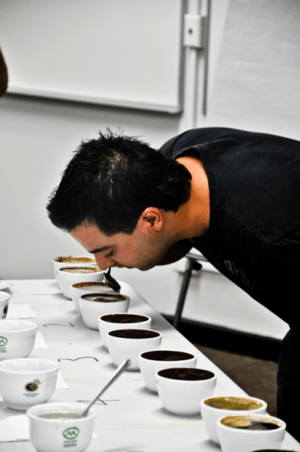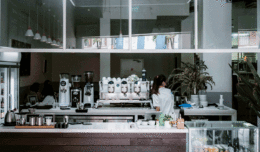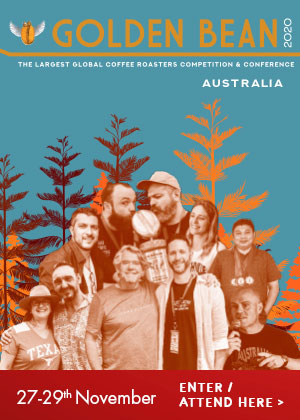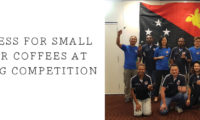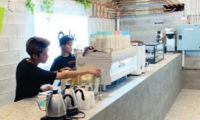Over twenty years I’ve seen lots of improvement and plenty of fine tuning, as everyone looks for one-percenters to improve their coffee quality. We better understand the equipment we use and while the fundamentals are the same, we’ve adapted equipment to provide better quality coffee more consistently.
They were one of the bigger privately owned coffee companies. Along with companies like Vittoria, Genovese, LaVazza and Coffex, they had a large share of the café market. Back then, there were not too many “boutique or speciality roasters”. Grinders were probably the boutique coffee of choice. I’ve heard this generation of roasters labelled as second wave, as talk of the third wave gained momentum, but I don’t really believe that type of pigeonholing. The great thing about the Australian coffee industry is that it has never stopped evolving and has continued to challenge itself for over 50 years. Lots of companies and individuals need to be credited for their part, and it will obviously continue evolving faster than we can imagine.
More Micro Roasters
In the last ten years, the industry has fragmented at a rapid rate. I guess there must now be over 500 coffee roasters in Australia. Close to 300 coffee roasters alone entered the Golden Bean competition in 2011/2012. Similarly to the beer industry, with the rapid growth of micro-breweries, we’ve seen the development of the micro-roaster, with many cafés and chains electing to roast their own coffee. I remember my partner, Paul Dimattina, had returned from the SCAA Conference in 2005 and identified this trend in the States and predicted it for Australia. At the time, I thought the level of expertise and service provided by coffee companies would outweigh the costs involved in cafés roasting themselves. What I didn’t take into account is that a lot of the smaller roasters have developed more in line with lifestyle choices, rather than for commercial reasons. The slow food movement, support local, carbon footprint, micro vs macro, Fairtrade and direct trade discussions have all been motivating forces. The number of boutique roasters will always continue to grow, but capital constraints will make it difficult for the majority to expand.
Larger roasters getting more specialised
On the flipside, the bigger companies will continue to exist on the premise of being able to continually improve quality of product, the consistency of blends and by offering coffee making equipment and training and service. You’ll also see them either offering or at least claiming to offer more specialty coffees.
Direct Trade
Fairtrade was a big growth market in Australia, but in the last few years, direct trade have been the buzz words. Traditionally, coffee has to go through a lot of channels before it lands at a coffee roaster’s door. I think over the last 5 – 10 years, more roasters than ever before have visited the countries and farmers from where they buy their coffees. Whether they are still buying through brokers or starting to deal direct, the key is that the industry is learning a lot more about what they’re buying and getting involved with more specific community initiatives, encouraging better farming techniques and taking on more personal involvement.
Specialty Coffee Without the Wank
I think we’ll be thirsty for cafés prepared to take themselves a little less seriously whilst still committed to serving specialty coffee. The industry is often perceived as being pretentious, and I think the venues that can serve awesome coffee with humility will remain our favourites.
Information and Social Media
The development of so many more roasters has created a lot of competition and innovation. Knowledge has become so much more readily available. Trade shows, forums, blogs have opened up the entire industry. Barista comps have seen the bar raised year upon year. There is healthy competition, but there is also collaboration and a lot of networking.
Better Equipment
Over twenty years, I’ve seen lots of improvement and plenty of fine tuning, as everyone looks for one-percenters to improve their coffee quality. We better understand the equipment we use and while the fundamentals are the same, we’ve adapted equipment to provide better quality coffee more consistently. Better temperature stability, multi-boilers, conical cutters, grind on demand, VST baskets, water filtration. I’m amazed and often perplexed by the level of experimentation and the investment some people are making with coffee equipment. Some of it makes sense, and some seem over the top, but the industry is constantly trying to discover equipment that can provide an edge on the competition.
Training
We’ve never conducted so much on site and in-house training. We run coffee schools continually through the week, and the level of our training has increased, from basic coffee making, to latte art, grinder workshops and now cupping and coffee appreciation classes. The industry has a strong thirst for knowledge, and everyone wants to learn more.


